Moisey Feigin lived 104 years, his last canvases are dated 2006 - at 102 he was still working, and these last, like many works of different years, were shown at a large exhibition at the Central House of Artists in Moscow in September this year. As often happens in the life of artists, he did not live to see his triumph for several months.
One of the artist's closest friends and connoisseurs, art critic Grigory Klimovitsky, says that Feigin is an island man, an island artist ... These words contain the very essence of the phenomenon. The world of Moses Feigin, like distant islands, is still separated from us not only by ignorance of his life, his ideas, his real philosophy - but he was, according to the testimony of those who knew him, a philosopher-polemicist! - but also his figurative language, a whole sign system of metaphors, allegories, concealments, associations.
A Jewish boy from a Belarusian town breaks out to Moscow, enters and graduates from VKHUTEMAS, learns from the leading figures of Russian painting - Mashkov, Osmerkin, Shterenberg - and conveys the spirit and style of interrupted searches through the decades, renewing it with thoughts, feelings and the context of the new time. Harlequins, musicians, Don Quixotes ... The entire figurative-color system, all the “writing”, all the graphic handwriting work in one “monotonous” in purpose, but inexhaustible in approaches. All his grandiose pictorial mosaic, as it were, reveals to us the dangerously revived ancient exclamation of the psalmist: "the foundations of the earth have shaken" and "there is no man".
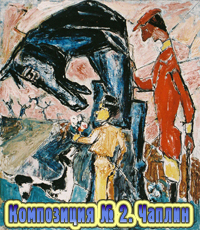
All compositions, all the artist's characters are built as a system of acutely felt intersections, displacements of lines and planes, devoid of absolutely any attractive forms of sensual origin. XX century! In this greenish-brown, lilac-black and angry white figures appear devoid of flesh, figures whose bodies are like crumbling buildings, scorched trees, crutches. But above these bodies of puppets surrealistically rise the heads of adamant thinkers, the last humanists, who burn with their eyes.
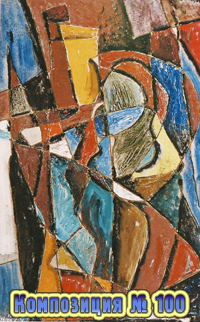
How lived and survived the formalist-painter, constructivist and expressionist artist who did not fit into the silver jubilant painting of the saccharine Union of Artists of the USSR lived and survived? Feigin was not devoid of resourcefulness and humor. He brilliantly mastered the "realistic method" (his self-portraits testify to this, in particular), entered this union! And as a member of the union began to receive production orders - to paint the factories, landscapes ... I did not run studios, I did not teach at universities. He turned his workshop into a small fortress of a truly rare and truly independent art in those conditions.
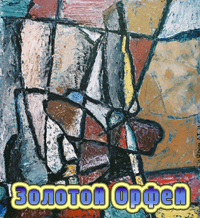
His life is devoid of flashy colors, fatal persecutions, shocking adventurism. He lived an ascetically simple life, knowing his own worth and believing in his star. The years of youth warmed and gave strength, when even the student of VKHUTEMAS himself, as a "young Komsomol", could intercede for his favorite teachers Mashkov and Osmerkin, whom the ardent ideologists wanted to remove away from the education of a new generation. A young man from the provinces got the People's Commissar A.V. Lunacharsky and defended his teachers.
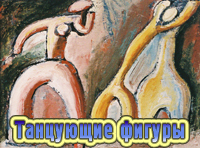
He was a man of a difficult fate and a difficult character. He was an artist of the grand style, who, however, disguised himself in the form of a carnival, a harlequiniade. He was an artist of the tragic grotesque, in which childishness and wisdom of age did not part. He had his own theater of a "toy man", a puppet, a cog of a stern state. He was lucky to have friends and connoisseurs who did not care about official recognition.
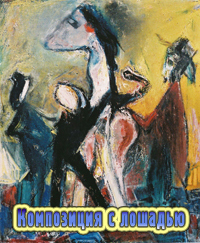
The artist, teacher and art historian Annamukhamed Zaripov has become one of the few collectors who have collected a unique, in every sense representative collection of the artist's paintings. In the recently released mighty album of his collection there are no less than three dozen paintings by Feigin - undoubtedly the first row. Filmmaker Yakov Nazarov not only made a reliable film about the artist's works and appearance, but also published in his album a recklessly truthful photograph - a portrait of the artist of recent years ...
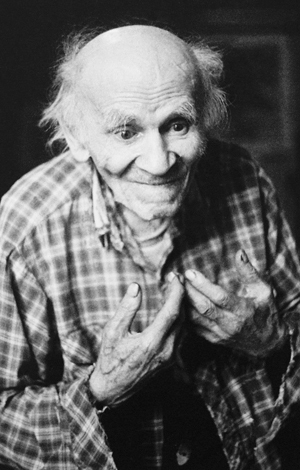
Here he is - a wise old man, in the ecstasy of the approaching thought, insight, disagreement with the world! This flaming, implacable, angry-beautiful look, and this carefree dress and unbuttoned sleeves ... Oh, stop it, what does it matter ... Was he "national", did he strive for this? Memoirists will someday say about this to the best of their understanding. One thing is certain - on all this ruthlessly truthful painting, on its fractures and dissonances, there is a reflection of the drama of the twentieth century. This is already evident today.

